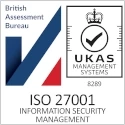15
+
YEARS OF
EXPERIENCE
1000
+
SUCCESSFUL
Projects
80
+
Satisfied
Clients

In today’s fast-paced digital landscape, businesses require agility, scalability, and cost-effective solutions to stay competitive. Software as a Service (SaaS) has emerged as a transformative cloud model that delivers applications over the internet, eliminating the need for organizations to install, manage, or maintain software on their own servers. SaaS enables companies to access powerful applications on demand, providing flexibility, efficiency, and reliability while reducing the burden on IT teams.
Understanding Software as a Service (SaaS)
Software as a Service (SaaS) is a cloud computing model in which applications are hosted and managed by a third-party provider and made available to users over the internet. Unlike traditional software that requires installation and maintenance on individual devices or servers, SaaS applications are accessed through web browsers or dedicated clients. Users can log in from anywhere, on any device, with internet connectivity, ensuring seamless access to critical business tools.
SaaS providers manage the technical infrastructure, security, updates, and backups, allowing organizations to consume software as a service rather than as a product. This approach removes the complexity associated with software deployment and ensures that applications are always up to date, reliable, and secure.





The Importance of SaaS in Modern Business
SaaS has become a cornerstone of modern business operations because it combines accessibility, scalability, and cost efficiency. By eliminating the need for local installations, businesses can deploy software quickly and scale usage based on demand. This is particularly beneficial for growing organizations or those with remote and distributed teams, as SaaS ensures consistent access across multiple locations and devices.
In addition, SaaS reduces IT overhead. With the provider responsible for updates, patches, and infrastructure maintenance, internal teams can focus on strategic initiatives rather than routine administrative tasks. Security and compliance are also handled by the provider, leveraging enterprise-grade protections and standards to safeguard sensitive data. This allows businesses to maintain high levels of security and compliance without investing in specialized expertise or additional resources.
SaaS is versatile, supporting a wide range of applications including customer relationship management (CRM), enterprise resource planning (ERP), human resources, collaboration tools, and productivity suites. This broad applicability makes SaaS an essential tool for organizations seeking efficiency, collaboration, and business agility.
How SaaS Works
SaaS applications are hosted on the provider’s cloud infrastructure and delivered over the internet. Users typically access the applications via web browsers or mobile apps, without installing or configuring software locally. The provider manages the backend infrastructure, ensuring uptime, performance, and data security.
Subscription-based pricing is a key feature of SaaS. Organizations pay a recurring fee—monthly or annually—based on the number of users, storage requirements, or level of functionality. This model converts capital expenditures into operational expenses, providing financial flexibility and predictable costs.
SaaS solutions often include integration capabilities with other cloud or on-premises systems, allowing businesses to create connected workflows and streamline processes. Providers also manage upgrades, enhancements, and patches, delivering new features automatically to all users without downtime or manual intervention.
Cloud Services
Comprehensive cloud services to enhance scalability, security, and collaboration, transforming how your business operates and grows.Infrastructure as a Service (IaaS)
Scalable IaaS solutions providing virtualized computing resources, storage, and networking to meet your business demands efficiently.Platform as a Service (PaaS)
PaaS solutions offering development platforms and tools to build, deploy, and manage applications in the cloud efficiently.
The Business Benefits of SaaS
The advantages of Software as a Service (SaaS) are wide-ranging and impactful. Organizations gain rapid deployment and instant access to essential applications, enabling teams to work efficiently without delays associated with traditional software installation. SaaS reduces IT workload, as maintenance, backups, and updates are managed by the provider.
SaaS also provides flexibility and scalability. Businesses can easily add or remove users, scale storage, or expand features as requirements evolve. This flexibility supports dynamic business environments and remote work, ensuring teams can remain productive from any location.
Cost efficiency is another major benefit. Subscription pricing eliminates large upfront investments in software licenses and infrastructure, while predictable fees support budget planning. SaaS also minimizes the risk of downtime or data loss, as providers implement robust security measures, redundancy, and disaster recovery systems.
By using SaaS, organizations can focus on core business objectives and innovation rather than managing technology. Applications are always accessible, secure, and up to date, empowering teams to collaborate effectively and deliver high-quality services.
SaaS as a Catalyst for Digital Transformation
Software as a Service (SaaS) is more than a method of software delivery—it is a strategic enabler of digital transformation. By providing on-demand access to powerful applications, SaaS allows businesses to adapt quickly, scale efficiently, and streamline operations.
Within the broader ecosystem of cloud services, SaaS complements other cloud models such as IaaS and PaaS, enabling organizations to build fully integrated, flexible, and scalable IT environments. By adopting SaaS solutions, companies gain the tools, accessibility, and agility necessary to drive growth, improve productivity, and remain competitive in a rapidly evolving digital landscape.
Conclusion
Investing in SaaS transforms how businesses consume technology, enabling them to leverage innovative applications without the complexity or cost of traditional software deployment. It empowers organizations to work smarter, respond faster, and focus on what matters most: delivering value to customers and stakeholders.

answer time
satisfaction
score
on initial call
same business
day









